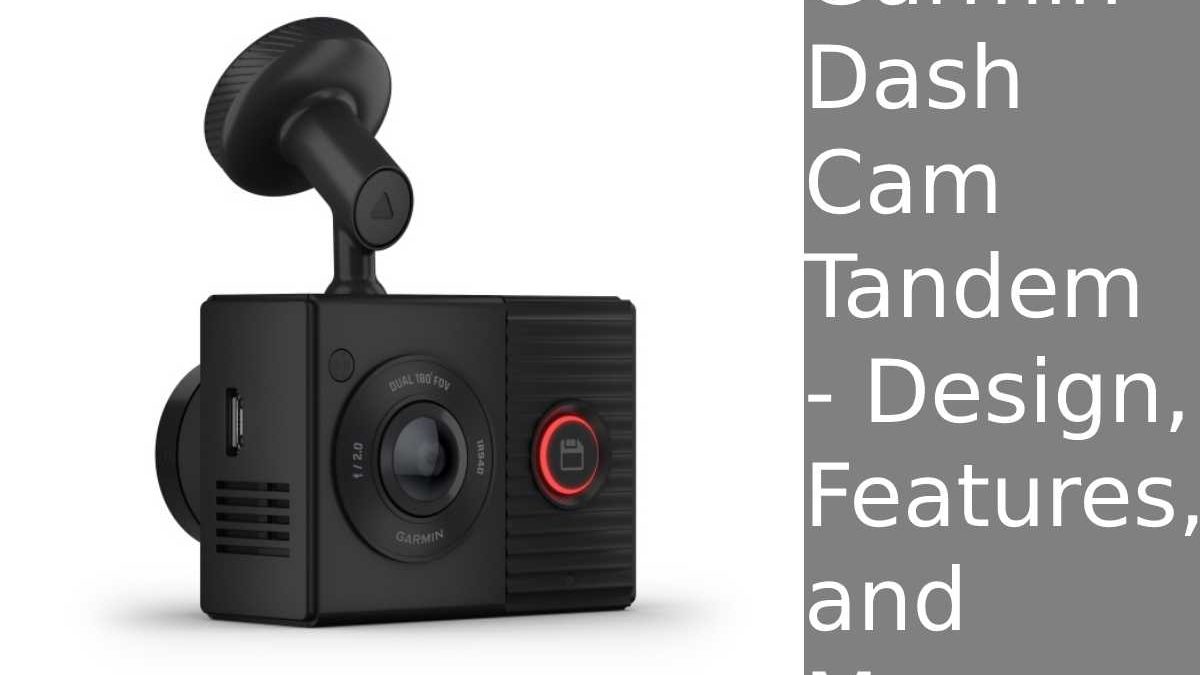Garmin Dash Cam Tandem
Garmin Dash Cam Tandem: With Dash Cam Tandem, Garmin has finally nailed its formula.
Along with the existing small size, full feature set, smart magnetic mounting system, and improved motion compensation of the company’s latest generation of front-facing dash cams.
You now get an interior camera. So yes, travel enthusiasts who want to document what goes on in the cockpit now have an option from Garmin.
Design and features
- If Garmin can fit a 180-degree field of view, a 1440p front camera (Brillnics BVR0500), and a 720p interior camera with a 180-degree field of view (OmniVision OV9750) with infrared illumination.
- Plus GPS, into a camera. The motherboard measures only 2.2 x 1.6 x 0.9 inches and weighs only 2.3 ounces, I can work with the phone.
- Especially if I can use Bluetooth instead of fiddling with Wi-Fi to connect, as is the case with most phone-centric dash cams, its capacity sounds small, but it made the whole phone thing a lot easier to digest.
- However, I used the Tandem for two full days without installing the phone app used for setup and live to view and never felt the need to. Having the GPS on board automatically sets the date and time helps.
- But Garmin also sets the defaults. I never changed anything, although I would probably lower the front camera’s resolution to 1080p to save storage space.
- You cannot hide the front/interior cameras behind the rearview mirror (it will block the view of the internal camera).
- So the smaller the dash cam, the less your view out the window will be blocked. Not that other dash cams are enormous.
- But the Tandem and all Garmin dash cams, as seen in the image above, are distinctively small.
- Here is not much to say about the two controls of the Tandem. First, there’s a sizeable multi-colored halo-lit button on the back that’s used to save the video (red), pair with Bluetooth (blue).
- Warn of errors (blinking yellow), and show you’re connected via USB (green). Apart from that, only the microSD card slot.
- The microphone on/off button on the bottom, and the micro-USB port on the left are bothersome on the outside.
Video quality
Now that I’ve seen Aukey DRS2’s 4K UHD captures, there’s a new bar to beat in terms of quality. But there’s also the storage issue:
- 4K UHD takes up three times what the Tandem’s 1440p requires. In fact, for most users, 1080p is still the sweet spot.
- Generally providing adequate detail (with good optics and sensors) and using a quarter of the space of 4K while reducing wear and tear on your cards.
- 4K UHD concerns aside, tandem captures are significant from a practical and legal perspective. Details like license plates are visible from a decent distance day and night.
- Saturation is good, and fisheye is handled as well as expected, given the 180-degree field of view. Weighing a slight fisheye vs. coverage, I’ll take the latter over the former any day.
- The interior night shots are assisted by infrared and cover the entire interior well. At such close range, 720p is more than up to capturing cockpit action.
- 4K UHD concerns aside, tandem captures are significant from a practical and legal perspective. Details like license plates are visible from a decent distance day and night.
- Saturation is good, and fisheye is handled as well as expected, given the 180-degree field of view. Weighing a slight fisheye vs. coverage, I’ll take the latter over the former any day.
- The interior night shots are assisted by infrared and cover the entire interior well. At such close range, 720p is more than up to capturing cockpit action.
Also Read: Who is an Entrepreneur? – Types, Flexibility, and More

